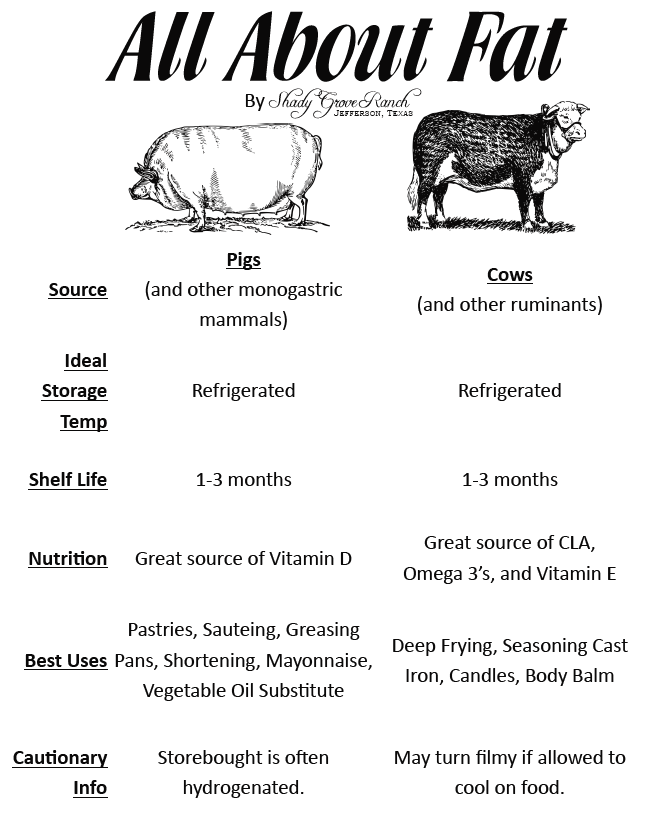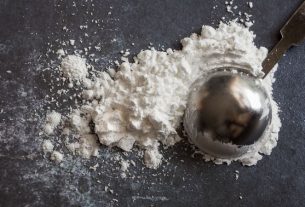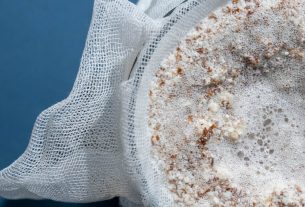When it comes to traditional fats used in the culinary world, tallow and lard take center stage.
The battle between these two kitchen stalwarts has raged on for centuries, with each boasting its own unique qualities.
From the rich, savory depths of tallow to the mild, neutral notes of lard, these fats offer a world of flavor possibilities.
Join us as we dive into the age-old debate of tallow vs lard and uncover the subtle nuances that set them apart in the world of cooking.
tallow vs lard
Tallow and lard are both traditional fats used in cooking, but they have some key differences.
Tallow comes from beef fat, while lard comes from pig fat.
Tallow is solid at room temperature and has a rich, savory flavor, while lard has a softer texture and a more mild and neutral taste.
Tallow has a higher smoke point, making it suitable for frying, while lard is commonly used in baking.
Both fats can be substituted for each other in recipes, with slight variations in texture and taste.
The choice between tallow and lard depends on the desired flavor and the dish being cooked.
Key Points:
- Tallow and lard are traditional cooking fats with distinct differences.
- Tallow is made from beef fat, while lard is made from pig fat.
- Tallow is solid at room temperature and has a rich, savory flavor, while lard has a softer texture and a more mild taste.
- Tallow has a higher smoke point, making it ideal for frying, whereas lard is commonly used in baking.
- Both fats are interchangeable in recipes with minor differences in texture and taste.
- The choice between tallow and lard depends on desired flavor and dish being cooked.
tallow vs lard – Watch Video
💡
Pro Tips:
1. Tallow was traditionally used to make candles, whereas lard was commonly used as cooking fat.
2. Tallow is rendered animal fat that is obtained from beef or mutton, while lard is obtained from pig fat.
3. Tallow has a higher melting point compared to lard, making it suitable for producing soap and other products that require a solid fat.
4. In ancient times, tallow was used as a lubricant for machinery and even in the process of mummification.
5. Tallow can be used to make high-quality leather products due to its moisturizing properties, while lard is commonly used in the production of traditional-style pastries and fried foods.
1. Introduction: Tallow And Lard As Traditional Cooking Fats
Tallow and lard have long been cherished as traditional cooking fats, offering unique qualities and flavors to a wide range of dishes. Tallow is derived from beef fat, while lard is obtained from pig fat. Both of these fats have played a prominent role in culinary traditions around the world for centuries.
2. Origin: Tallow From Beef Fat, Lard From Pig Fat
The primary distinction between tallow and lard lies in their origin. Tallow is derived from the fat of beef, while lard is obtained from pig fat. This difference in source contributes to variations in texture, flavor, and suitability for different cooking methods.
- Tallow: Derived from beef fat
- Lard: Obtained from pig fat
“The difference in source contributes to variations in texture, flavor, and suitability for different cooking methods.”
3. Texture: Tallow Solid, Lard Softer
One noticeable difference between tallow and lard is their texture. Tallow solidifies at room temperature, maintaining a firm consistency. On the other hand, lard has a softer texture and is more malleable.
This difference in texture can influence their application in various culinary endeavors.
-
Tallow is ideal for cooking methods that require a solid fat, such as frying or baking. Its firm consistency allows it to hold its shape and provides an excellent base for pastry crusts or deep frying.
-
Lard, with its softer texture, is well-suited for applications that require a creamy and smooth texture, such as making flaky pie crusts or tenderizing meat. It can be easily incorporated into recipes and adds a rich flavor to dishes.
Taking into account their distinct textures, both tallow and lard have their own unique qualities that can enhance the taste and texture of dishes.
In summary, tallow solidifies at room temperature and has a firm consistency, while lard has a softer texture and is more malleable. The choice between the two depends on the desired culinary application.
- Tallow is ideal for frying or baking.
- Lard is well-suited for making flaky pie crusts or tenderizing meat.
4. Flavor: Tallow Rich And Savory, Lard Mild And Neutral
When it comes to flavor, tallow offers a rich and savory profile. Its beefy taste adds depth and complexity to dishes, making it particularly suitable for recipes that require a pronounced beef flavor. Lard, on the other hand, possesses a more mild and neutral taste. This subtle flavor allows it to seamlessly blend with various ingredients without overpowering them.
5. Saturated Fat Content: Both Fats High In Saturated Fats
It is essential to note that both tallow and lard are high in saturated fats (important information). Saturated fats have been the subject of much debate in recent years due to their association with certain health risks. When consumed in moderation as part of a balanced diet, however, saturated fats can be a valuable source of energy.
6. Cooking Methods: Tallow For Frying, Lard For Baking
Tallow and lard are both versatile fats used in cooking, but they excel in different methods. Tallow’s higher smoke point, the temperature at which a fat starts to break down and emit smoke, makes it perfect for frying, particularly at higher temperatures. On the contrary, lard is more commonly employed in baking because of its ability to add moisture and create a tender texture in pastries and bread.
7. Substitutability: Tallow And Lard Can Be Swapped With Slight Variations
In recipes, tallow and lard can often be substituted for each other. However, it is important to note that there may be slight variations in the final texture and taste of the dish. These variations, though subtle, can still impact the overall result. Therefore, it is recommended to consider the specific requirements and desired outcome of the dish before substituting one for the other.
- Tallow and lard can be substituted for each other in recipes.
- There may be slight variations in the final texture and taste of the dish.
- These variations can impact the overall result.
- Consider the specific requirements and desired outcome of the dish before making a substitution.
8. Nutritional Value: Essential Vitamins And Calorie Content
Both tallow and lard contain essential vitamins. They are a source of energy, with a tablespoon of both fats providing 115 calories. While tallow and lard are primarily composed of saturated fats, they also contain small amounts of polyunsaturated and monounsaturated fats. These fats play a vital role in various bodily functions and should be consumed as part of a balanced diet.
- Both tallow and lard are sources of essential vitamins
- A tablespoon of both fats provides 115 calories
- While primarily composed of saturated fats, they also contain small amounts of polyunsaturated and monounsaturated fats
Important: These fats play a vital role in various bodily functions and should be consumed as part of a balanced diet.
9. Storage And Care: Airtight Containers And Freezing Options
Proper storage and care are crucial for maintaining the quality of tallow and lard. It is advised to store them in airtight containers in a cool, dark place. This helps prevent oxidation and extends their shelf life. For long-term storage, freezing is a viable option. Regularly checking for signs of spoilage, such as off smells or discoloration, is crucial to avoid using rancid fats.
10. Using The Right Fat: Choosing Between Tallow And Lard Based On Flavor And Dish
When deciding between tallow and lard, it is important to consider the desired flavor and the dish being cooked. Tallow has a distinctive beefy taste, making it a preferable choice for dishes that require a pronounced beef flavor. Meanwhile, lard has a more neutral profile that allows it to complement recipes involving pork or chicken. Additionally, lard has the ability to create a crisp texture in deep frying, which can be a deciding factor.
Tallow and lard are traditional fats that have been used in cooking for generations. While tallow offers a rich and savory flavor, lard provides a mild and neutral taste. Moreover, their distinctive textures, nutritional values, and storage requirements make them suitable for different cooking methods and recipes. By understanding the qualities, benefits, and uses of tallow and lard, one can make informed decisions when selecting the appropriate fat for their culinary endeavors.
💡
You may need to know these questions about tallow vs lard
Is it better to fry in tallow or lard?
When it comes to the question of frying in tallow or lard, it ultimately depends on personal preferences and cooking needs. Lard, with its milder flavor and crisp texture, can be a great choice for those seeking a more traditional and versatile frying option. On the other hand, tallow provides a distinct beefy flavor and has a higher smoke point, making it ideal for frying at higher temperatures and infusing dishes with a rich taste. Ultimately, the choice between tallow and lard will depend on the desired flavor profile and cooking technique.
Is tallow healthier than olive oil?
polyunsaturated fats. These types of fats have been shown to have a positive impact on cholesterol levels and decrease the risk of heart disease. On the other hand, tallow, derived from beef fat, contains a higher percentage of saturated fats, which are generally associated with an increased risk of heart disease and high cholesterol levels. Therefore, while tallow may be enjoyed in moderation as part of a diverse diet, olive oil is often considered a healthier option due to its composition of healthier fats.
Is tallow the healthiest fat?
Tallow, with its high content of CLA and oleic acid, certainly possesses potential health benefits. Research indicates that CLA supports a healthy metabolism and has the potential to aid in fat burning. Furthermore, it has been suggested that CLA and oleic acid also possess anti-inflammatory and immune-supporting properties, potentially combating tumor growth. While further studies are needed to fully understand the extent of these health benefits, tallow emerges as a promising fat option with potential advantages for overall well-being.
Is beef tallow just grease?
No, beef tallow is not just grease. While it is a rendered fat from beef, it serves a variety of purposes beyond cooking. Its versatile nature allows it to be utilized as a lubricant as well as a key component in the production of balms, lotions, soaps, and candles. So, while it may share some similarities with grease, beef tallow’s range of applications distinguishes it from being considered simply as grease.
Reference source
https://discover.grasslandbeef.com/blog/tallow-vs-lard/
https://thecoconutmama.com/beef-tallow-vs-lard/
https://thecoconutmama.com/beef-tallow-vs-olive-oil/
https://draxe.com/nutrition/tallow/



